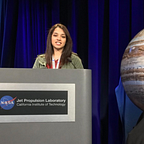How to Design Lunar Wheels
The Inside Story of How ECA the Rover Got Her Wheels
Imagine youself on the way to a picnic. You’re driving a car — say a Honda City — on the road, and it starts to rain. The windows are up, the vipers are working full time, and your vehicle moves smoothly on the road. Now picture yourself leaving the road and entering a trail. You’re very aware of your car becoming a little shaky on the crunchy gravel you drive on. As you move on, the ground becomes softer. A little while later, you pass through a muddy area that is full of puddles. As you drive through each, you start noticing that the ground has now become slippery. Suddenly, your back wheel gets lodged in wet mud. You try hard to get it out. You give more power and press down harder. The more you accelerate, the faster your wheel spins, but your vehicle does not move. You’re stuck.
The same thing could happen if you take your Honda City to a beach. Your wheels will get stuck in the sand and you won’t be able to move. On the other hand, had you taken a Hummer on your picnic or to the beach, you would have moved happily (albeit gotten wet in the rain). That’s because the Hummer’s wheels look like this:
While a Honda City’s wheels look like this:
The large gaps on the tread of the wheel of the Hummer help it move through surfaces that are softer — wet mud, dry sand. Note that the gaps are not level; the wheel has ridges, bumps that are higher than the rest of the surface, almost like spokes. These are called grousers. They help push the car forward by pushing the soil back.
On the Moon’s surface, the soil is much different than what we’ve seen anywhere on earth. It’s softer, looser, and has smaller particles. The closest comparison would be finely ground rock. To drive on a full field of powdered rock, you actually need grousers that look like spokes.
TeamIndus’s ECA rover wheels look like this:
The grousers here are much more prominent as compared to a car’s tyres. These help not only in digging deeper but also in pushing away a lot of the material from in front of the wheel before the wheel moves forward.
All rovers that go on the Moon would have similar — if not identical — wheels.
Take a look at our video on ECA’s wheels.
Every 2 weeks we send out a newsletter giving you an update of all that is happening at TeamIndus and opportunities for you to engage with us.
